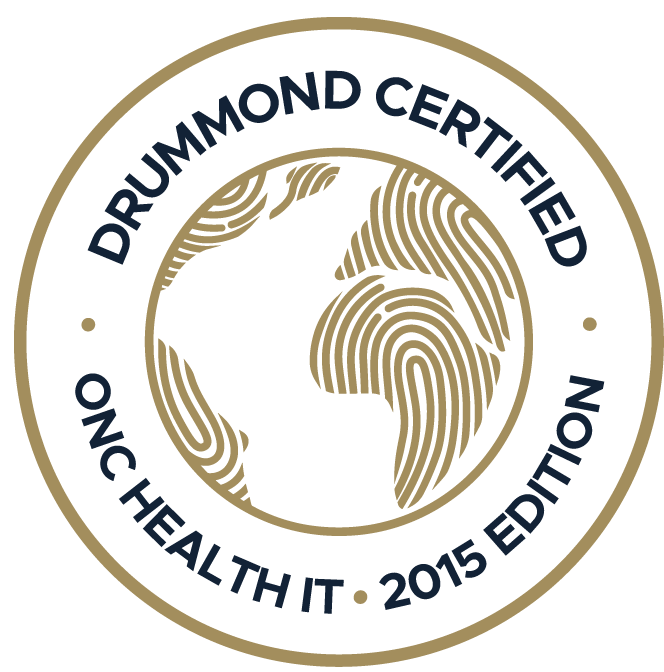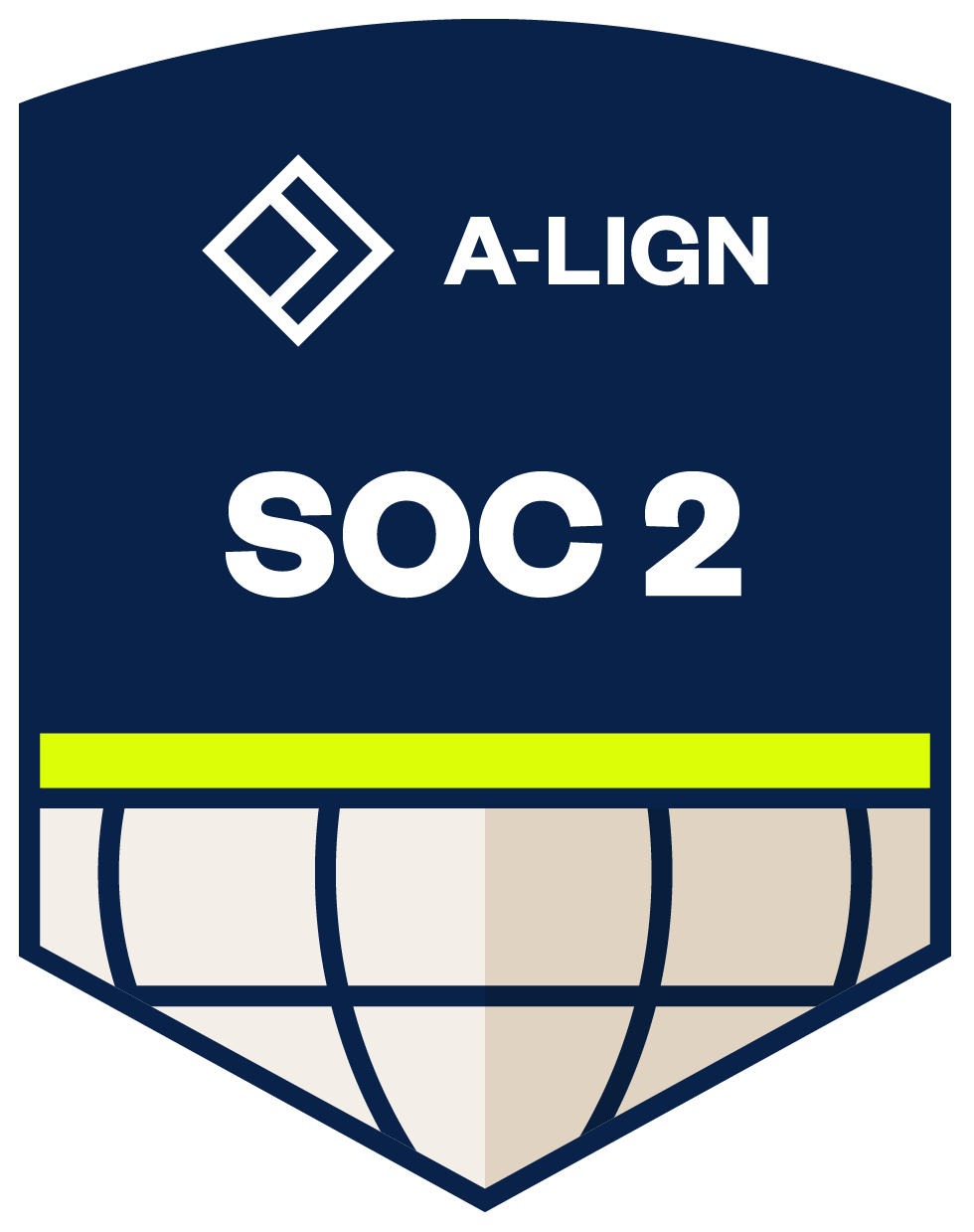The pressure on today’s clinicians is hitting a tipping point. The U.S. healthcare system is dealing with high patient volumes and pharmacy closures. Physicians are expected to deliver safer, more compliant care, often...
The pressure on today’s clinicians is hitting a tipping point. The U.S. healthcare system is dealing with high patient volumes and pharmacy closures. Physicians are expected to deliver safer, more compliant care, often with fewer resources than ever.
Yet, amid this turbulence, one milestone stands out as a signal of what’s possible. Surescripts Annual Impact Report 2024 shows that U.S. providers issued more than 310 million controlled-substance e-prescriptions. A record that reflects both the rising complexity and increasing trust in e-prescribing.
For most of these providers working in practices across the U.S., an EPCS-certified EHR has become a lifeline. It ensures true security, auditability, and regulatory compliance for every prescription of a controlled substance.
Key Takeaways
- The surge to 310 million controlled-substance e-prescriptions shows that electronic prescribing is now the baseline for safe, accountable clinical care.
- EPCS-certified EHRs give physicians the protection they need amid escalating regulatory, security, and documentation pressures.
- Integration across EHR, PM, and RCM creates a single source of truth. And this approach ultimately reduces errors, strengthens compliance, and supports more reliable practice performance.
What is an EPCS-Certified EHR?
An EPCS‑certified EHR is simply an electronic health record system that’s been approved to handle “Electronic Prescribing of Controlled Substances” (EPCS). Instead of writing a paper script or calling it in, providers can safely and directly send controlled‑substance prescriptions from their EHR to the pharmacy.
These systems enforce strong identity proofing, two‑factor authentication, and a digital signature, all to meet DEA rules. But what matters is how providers feel about EPCS-certified EHRs. In early studies, physicians who adopted EPCS reported fewer medication errors, better prescription accuracy, and stronger coordination with pharmacists.
310 Million Controlled-Substance E-Prescriptions: A New Benchmark for Digital Trust
According to Surescripts' annual report, e-prescribing for controlled substances in the U.S. surpassed 310.5 million prescriptions last year. It's a landmark figure that signals more than just volume growth.
Why Does This Milestone Matter for Providers and Patients?
For practicing physicians like you, this shift means that prescribing controlled drugs electronically (rather than via paper or fax) is no longer simply a “nice-to-have”. It's rapidly becoming the baseline for safe, efficient, and auditable care.


For prescribers and patients, the implications are equally significant as e-prescribing:
- Reduces the risk of lost or altered paper prescriptions
- Minimizes transcription errors and dispensing delays
- Strengthens the chain of custody for controlled substances
- Enhances visibility for both prescribers and pharmacists
Rising Complexity Amid Pharmacy Closures and Workforce Strain
An interesting trend in the U.S. is the rise of telepharmacy. An article from US Pharm recently reported that over 7,000 pharmacies have closed since 2019, and more than 2,200 simply in 2024 alone. The stats imply that the pharmacy landscape is under significant pressure.
What does this mean for you as a clinician? That answer eventually revolves around the fact that pharmacy capacity is shrinking while prescribing complexity is increasing. This may include controlled substances, multiple dispensing rules, and documentation mandates.
Together, the 310-million milestone and the backdrop of pharmacy closures underline a crucial point: the industry is shifting rapidly toward digitally-enabled prescribing as both a tool of safety and a tactical necessity.
How EPCS-Certified EHRs Strengthen Practice Operations
Modern EPCS-certified EHRs, such as Practice EHR, tie together EHR, practice management (PM), and revenue cycle management (RCM) operations so smoothly that practices no longer need to rely on multiple systems.


Here’s how they help providers stay ahead of the game in patient care and revenue management!
1. Cleaner Documentation Lowers Denials and Protects Revenue
You’ve probably had denied claims because a prescription detail didn’t match the documentation. Perhaps the sign was unclear, or a controlled-substance note didn’t meet the payer’s requirements.
These small documentation gaps can cost your practice thousands and delay patient care.
With an EPCS-certified EHR, prescribing data is structured, consistent, and automatically linked to prior authorization and billing. This ensures every controlled-substance order has the exact documentation that payers expect. This would ultimately reduce denials and protect your revenue without adding to the administrative workload.
2. Streamlined Workflows Reduce Time Lost to Manual Processes
Most physicians are stuck dealing with endless prior authorization delays. An average of 43 PAs per week. You’ve likely experienced situations where a patient is waiting at the pharmacy, but the medication is held up because the PA wasn’t triggered automatically.
But here’s the solution!
An EPCS-ready EHR system ties the medication order directly to eligibility checks and necessary clinical documentation. This drastically shortens PA turnaround times and frees your staff from phone calls and manual follow-ups.
3. A Single, Integrated System Eliminates Data Silos
Many practices still use separate systems for prescribing, scheduling, and billing, which means mismatched records, duplicated data entry, and errors that slip through unnoticed. For example, a patient may switch medications, but the billing team still submits a claim with the discontinued drug because the update never synced.
The good news is that getting rid of these data silos is easy. All you need to do is switch to integrated EPCS-certified EHR platforms.
A fully integrated EPCS-certified EHR, PM, and RCM platform consolidates everything into one record. When you update a prescription, the scheduling and billing teams see it instantly. There are no silos, no inconsistencies, and far fewer compliance risks.
4. Automated Audit Trails for Every Controlled-Substance Order
During a DEA audit, physicians often scramble to pull identity-proofing records, access logs, and prescribing histories. This happens especially if the data lives in multiple systems. One missing timestamp or incomplete access log can create unnecessary risk.
But here’s a trick! EPCS-certified systems, like Practice EHR, generate automatic audit trails for every controlled-substance order. Identity proofing, authentication steps, edits, cancellations, and pharmacy communication are all captured without your staff having to compile anything manually. If an audit happens tomorrow, you’re already prepared.
Why EPCS Compliance is Now More Important than Ever
As controlled-substance regulations tighten nationwide, physicians are expected to keep pace with rapidly evolving standards without additional support or time. Here are two reasons why EPCS has become the backbone of safer, more reliable prescribing!

Reason #1: Meeting DEA, State, and Federal Mandates Without Administrative Burden
The regulatory environment around controlled-substance prescribing has shifted dramatically over the past few years. With 83.9% of e-prescribers and 96.3% of pharmacies on the Surescripts network now using EPCS, the system has become the norm, not the exception.
For physicians, this means that compliance is no longer optional or “nice to have.” It’s the expectation at every level: DEA, state, and federal.
Here’s how an EPCS-certified EHR helps physicians stay compliant without adding to the workload:
- Reduces administrative stress by automatically keeping up with DEA, state, and federal prescribing rules.
- Cuts down on extra clicks and paperwork so you can stay efficient during busy clinic hours.
- Prevents workflow disruptions by staying aligned with new regulatory updates in real time.
- Protects your practice by ensuring every controlled-substance prescription meets compliance standards.
- Keep your focus on patients, not tracking policy changes or managing manual processes.
Reason #2: Identity-Proofing and Credential Security are Tightening
As EPCS utilization grows, so does the focus on security, especially when it comes to prescriber identity protection. This heightened scrutiny is good for physicians and patients, but it also raises the bar for what an EPCS-certified EHR must deliver.
Stronger identity proofing standards mean physicians now need EPCS systems that provide:
- More rigorous identity verification to match enhanced national security requirements.
- Tighter credential safeguards that prevent misuse of prescriber information.
- Seamless multi-factor authentication that strengthens security without disrupting workflow.
- Built-in protections against unauthorized access and fraudulent prescribing attempts.
And that’s precisely what Practice EHR offers its thousands of users across the U.S. Ultimately, an EPCS-certified EHR, like Practice EHR, helps you:
- Protect your professional identity and DEA registration.
- Keep patients safe with secure and compliant controlled-substance prescribing.
- Maintain smooth, efficient workflows without added steps or delays.
Smarter, Safer Prescribing Workflows Start With EPCS-Ready Technology
Today’s prescribing environment demands more precision with much less friction!
The good news: the newest generation of EPCS-ready tools is built exactly for that. These systems combine compliance, automation, and intelligence to help physicians prescribe confidently.
The New Era of Data-Quality Enforcement (Sign Accuracy & Auto-Corrections)
One of the biggest shifts in 2024 was the industry-wide push toward eliminating unclear or unsafe sign information. The network now automatically rejects unsafe signs and has translated 5.2 billion signs into structured formats for consistency and patient safety.
For physicians, this means fewer errors, fewer pharmacy callbacks, and far less ambiguity.
An EPCS-certified EHR should actively leverage auto-correcting, structuring, and validating instructions so your prescriptions are always accurate before they even leave your screen. When signs are crystal clear, pharmacists dispense with confidence, and patients stay safer.
Faster, Cleaner Prescriptions Through Collaborative Tools
Modern prescribing is more than just sending scripts. It’s also about making sure the right information moves between providers and pharmacies instantly. Tools like CancelRx, which saw 20.1% year-over-year growth, ensure outdated medications are removed from pharmacy systems immediately, reducing confusion and preventing duplication.
Meanwhile, RxChange has transformed how issues get resolved. Instead of phone calls, voicemails, and faxed clarification requests, pharmacists can communicate electronically within the workflow you already use.
An EPCS-certified EHR should make these collaborative tools feel effortless and fully integrated.
Reducing Workflow Interruptions Through Embedded Health Intelligence
Access to real-time information is now more important than ever. With 3.31 billion medication histories delivered in 2024, clinicians can finally see the full picture of a patient’s medication use without guesswork.
This cuts down errors, speeds up decision-making, and reduces the risk of contraindications or duplications.
Integrated EPCS systems prevent “prescribing blind spots” by surfacing accurate histories, allergy information, and fill patterns.. The result is fewer interruptions, fewer surprises at the pharmacy counter, and safer prescribing for complex patients.
The Future of EPCS: Advancing Toward Safer, Smarter, Fully Automated Care
The future of prescribing is increasingly automated, intelligent, and compliance-driven with EPCS. EHR integration with EPCS is even safer and more efficient. As technology advances to fully integrated care, EHR integration with EPCS will empower you to prescribe controlled substances in the safest way possible.
Practice EHR, a certified EPCS EHR system, has been assisting thousands of physicians with electronic prescriptions for controlled substances. Many report significant improvement in their clinical workflows after switching to Practice EHR.
Ensuring safe and secure e-prescribing at a medical practice starts with switching to an EPCS-certified EHR system. And that switch is easier with an intuitive EHR system like Practice EHR. Request a free demo today to learn more!
FAQs
An EPCS‑certified EHR is simply an electronic health record system that’s been approved to handle “Electronic Prescribing of Controlled Substances” (EPCS). Instead of writing a paper script or calling it in, you can safely and directly send controlled‑substance prescriptions from your EHR to the pharmacy.
An EHR becomes EPCS-certified when it meets all DEA requirements for electronic prescribing of controlled substances. This includes strong identity-proofing, two-factor authentication, digital signatures, and secure audit trails. Certification ensures the system can legally and safely send controlled-substance prescriptions to pharmacies.
While DEA regulations apply nationwide, many states now have their own mandates requiring controlled substances to be sent electronically. Because these rules evolve frequently, having an EPCS-certified EHR ensures you stay compliant without manually tracking state-by-state changes.
Topics: Integrated EHR, Patient Care, Small Practice, EHR Solution, Specialty-Specific EHR, digital age, HIPAA Security, Industry Update, Medical Billing, Medical billing services, EHR, Technology in Healthcare, EHR Features, AI Scribing, AI EHR, EHR Implementation, Best EHR Software, EHR for Small Practices, Best EHR Practice, EHR Integration
RECENT POSTS



TOPICS
- EHR Solution (190)
- EHR (123)
- digital age (116)
- Patient Care (115)
- Medical Billing (109)
- Specialty-Specific EHR (109)
- Industry Update (96)
- Technology in Healthcare (84)
- EHR Features (79)
- Small Practice (76)
- Medical billing services (71)
- Integrated EHR (62)
- RCM (61)
- HIPAA Security (60)
- New Technology (44)
- Cloud-based EHR (43)
- Telemedicine (41)
- Healthcare Office Management (40)
- Practice EHR News (38)
- Kiosk (31)
- Revenue Cycle Management (28)
- AI Solutions (22)
- ePrescribing (21)
- AI Scribing (16)
- Best EHR Software (15)
- EMR (12)
- Practice Management Software (11)
- Client Favorites (10)
- Practice Automation (10)
- TeleVisit (10)
- The ONE (10)
- AI-powered Medical Billing (9)
- Switching to New EHR (9)
- AI EHR (8)
- MACRA/MIPS (8)
- Patient Portal (8)
- Urgent Care (8)
- AI Scribe (7)
- EHR Integration (7)
- E-Prescribing (6)
- Product Updates (6)
- Psychiatry EHR (6)
- events (6)
- AI scanning (5)
- Best EHR Practice (5)
- MIPS (5)
- HIPAA (4)
- Insider (4)
- Internal Medicine EHR (4)
- MIPS Reporting (4)
- Mobile EHR (4)
- Orthopedics EHR (4)
- Podiatry (4)
- Podiatry EHR (4)
- Telehealth Platform (4)
- Automated Health Tools (3)
- Chiropractic EHR (3)
- Digital Experiences (3)
- EHR Flaws (3)
- EHR Implementation (3)
- EHR for Chiropractors (3)
- EHR for Small Practices (3)
- Family Medicine EHR (3)
- Patient Check-in Kiosk (3)
- PracticeEHR GO App (3)
- Regulatory Updates (3)
- Telehealth Platforms (3)
- Clearinghouse (2)
- Dermatology EHR (2)
- EHR Scheduling (2)
- Eligibility Verification in Medical Billing (2)
- Foot and Ankle Care (2)
- Foot and Ankle EHR (2)
- Health records 101 (2)
- Integrated Practice Management (2)
- Medical Credentialing (2)
- Medical Practice Management Software (2)
- Quality of Patient Care (2)
- Reporting Under MIPS (2)
- Risk and Liability in Medical Settings (2)
- What Works Clearinghouse (2)
- AI Scan (1)
- Bariatric EHR (1)
- Behavioral Health Practices (1)
- Billing Communication (1)
- Billing for Private Practices (1)
- Cardiology EHR (1)
- Cash Flow (1)
- Cashless Payments (1)
- Charting (1)
- Data Security (1)
- Dos and Don'ts (1)
- EHR Guides (1)
- EHR KPIs (1)
- EHR Questions to Ask (1)
- EHR Transition (1)
- EHR for Chronic Illness (1)
- EMR vs EHR Difference (1)
- ENT EHR (1)
- Endocrinology EHR (1)
- Family Medicine (1)
- Gastroenterology (1)
- Gastroenterology EHR (1)
- General Surgery EHR (1)
- Geriatric AI scribe (1)
- Geriatrics EHR (1)
- Guides (1)
- Healthcare Compliance Certification (1)
- Healthcare Practice Office Management (1)
- Help Center Videos (1)
- Insurance Reimbursement (1)
- KPI (1)
- Key Performance Indicators (1)
- Lab Processing (1)
- MACRA (1)
- Medical Billing Partner (1)
- Medical Coding Services (1)
- Multilingual AI Scribe (1)
- Nephrology EHR (1)
- Neurology EHR (1)
- Pain Management EHR (1)
- Pediatrics EHR (1)
- Physical Therapy EHR (1)
- Practice Cash Flow (1)
- Practice Efficiency (1)
- Pulmonology EHR (1)
- Reconsider Your EHR (1)
- Simplify Practice Management (1)
- Staffing in Healthcare (1)
- Switch Medical Billing Providers (1)
- Urgent Care Medical Billing (1)
- Urology EHR (1)
- Voice-Activated AI Scribe (1)
- insurance claim denials (1)


.webp)




